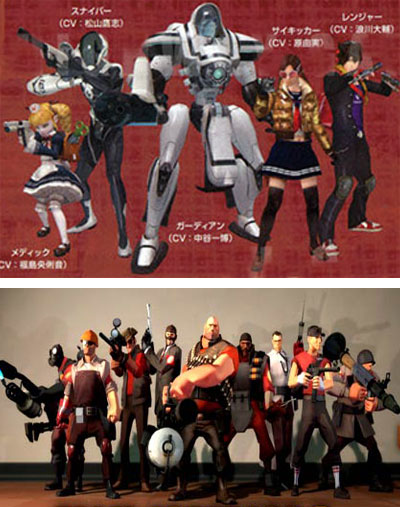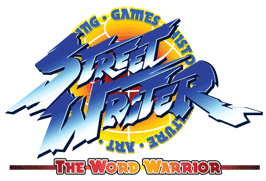Sega and Namco were unparalleled in the arcade racing field. Sega was the older and larger of the two companies. It had several R&D groups running all of the time testing out new ideas and technology. The first three; AM1, AM2 and AM3 were working on games while AM4 was developing cabinets for the three. The stand up cabinets from Sega were always well done but the sit down deluxe cabinets were in a class all their own. In the previous blog I mentioned that the early sit down racing cabinets enclosed the player to give them more of a simulation experience. Some games had gas, brake and sometimes even a clutch and shifter. Those cabinets featured vinyl graphics that recreated dashboards, complete with a speedometer and tachometer. While these were static images stuck on pressed board to young patrons they were as good as the real thing. With some tape, markers and scissors a child with a vivid imagination could turn a large cardboard box into a rocket ship, submarine or fighter jet. Now think about the reaction that a deluxe cabinet would have given these same kids.
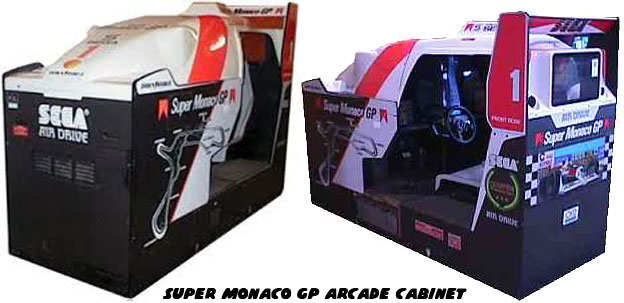
Sega did not have to shape the body of the Super Monaco GP cabinet like a Formula-1 racer. They did not have to paint up the fiberglass body and cover it with sponsor stickers either. They did not have to put a magnifying window behind the cabinet so that patrons could watch the race without interfering with the driver. They did not have to map out and recreate the most accurate (for the time) map of the actual Monaco Circuit. Arcade fans were grateful that they did all of those things. The game was also innovative for its use of paddle shifters rather than the traditional stick shift. Up until that point most games had a stick shift that went from low to high gear, sometimes with a turbo button on the thumb rest. Many racing games from the west actually had 4-gear shifters going all the way back to the late '70s. The paddle shifter, located behind the steering wheel, was cutting-edge technology that was pioneered in Formula-1 at the start of the '90s. The technology would not find its way into production cars for several years but Sega had a working version in their games right away. Young racing fans felt privy to the inside world of an F1 driver whenever they played the game. The extra touches that Sega put into the cabinet, including realistically moulded plastic racing seats, won them many accolades. The game found its way to the consoles and PC but with additional tracks and teams added as well.
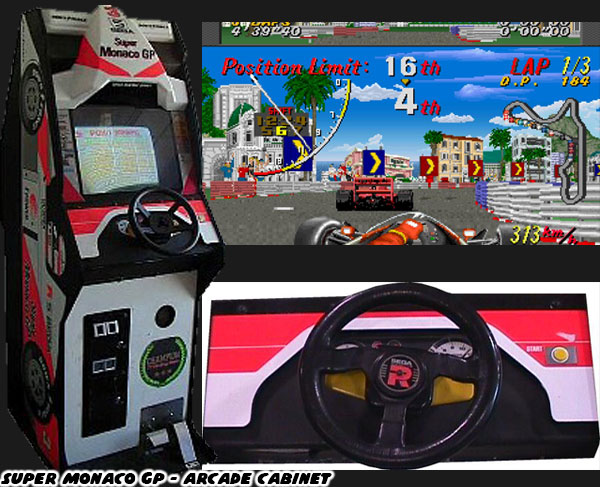
Teens and adults would get the most out of a deluxe cabinet like Super Monaco GP but some fans were to small to reach the pedals and too weak to fight the force-feedback steering. For every big title that the publishers released they were always mindful of their youngest fans. Sega and Namco would sometimes create a kiddie-size version of some of their cabinets. Perhaps a very simple driving game on a cabinet that rocked back and forth. In this way little brothers and sisters would not feel left out from the experience.
Namco had found considerable success when they released the 3D title Ridge Racer in 1993. I will go much more in depth on that title in future entries to this series. Ridge Racer had gotten sequels and console releases over the years and had become very familiar to young fans.The problem that kids had with Ridge Racer were its challenging controls and steep learning curve. They wanted to participate in the game, especially its over-the-top spectacle where news helicopters would fly right over the cars and fans would cheer from the edge of the track. Namco made a simpler version of the game with Choro-Q style versions of the iconic cars and tracks. It also included songs from the original game. Namco designed a smaller cabinet with a smaller steering wheel, no brake or gear shifter and only a gas pedal that the smallest patrons could use. The game was called
Pocket Racer and it was released in 1996.
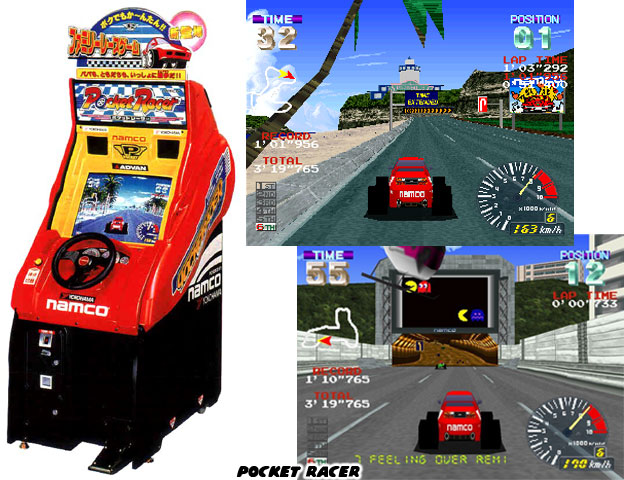
Pocket Racer was much more forgiving to players that made mistakes such as running into walls or even opponents. The cars would simply bounce and keep going. Namco knew that the best way to build a fan base was by offering as broad a spectrum of experiences as they could to players of every age and ability. They then had to continuously challenge these players at every stage. Toddlers that wanted to drive cars like the big boys no longer felt left out. Of course older kids and teens would become more critical about their own experiences as well. The deluxe sit down cabinets from the early '80s were nice but had become antiquated. The seats and back were rigid and in a fixed position. Players that were too short or too tall found it difficult to enjoy the experience. I remember that in the early 'late '70ss I couldn't reach the pedals on some games but by the end of the '80s I could barely fit into the cabinets. Namco, Sega, Atari and a few other developers began experimenting with adjustable seats. Atari's deluxe cabinets for Hard Drivin' and Race Drivin' were exceptional. By the '90s sliding seats were an innovation that many would take for granted. Not me of course, I would always be thankful to any developer that realized that one size did not fit all.
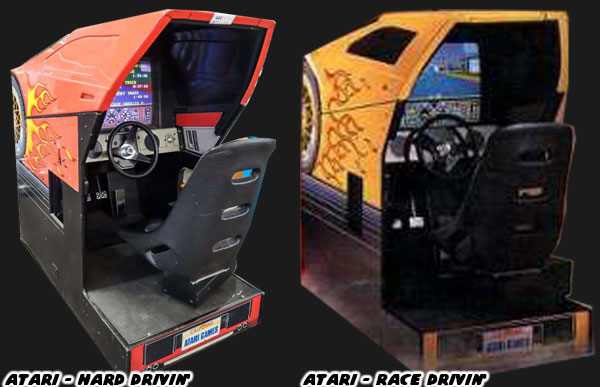
Through the '80s and '90s Sega would continue to push the definition of deluxe sit down cabinet and eventually did away with the enclosed cockpit for many of their racing games. Instead AM4 opted for outlandish body molds and non-functional but very stylish accents. These included wheels, fenders, taillights and exhaust pipes in some cases. If arcade games were about grabbing the attention of players then it would stand to reason that a shapely 3D cabinet attracted more people than even the flashiest 2D vinyl sticker. In several deluxe cabinets Sega integrated hydraulics to lift, tilt and shake the player and give them an even more immersive experience. It was a sight to behold when an arcade had four or more Daytona USA cabinets lined up side by side. The cabinets were actually designed to fit flush against each other and even be networked. A row of Daytona machines could easily take up over 20 feet and line an entire wall of an arcade. Watching the displays in perfect unison showing the entire width of a virtual racetrack was mesmerizing.

Not every arcade could afford the spectacle of multiple deluxe cabinets, often times one was more than enough for patrons. The arcades that could afford the biggest and best machines were always in the largest cities and sometimes even had an influx of tourists during peak seasons. Sega and Namco had built relationships with distributors and began opening up their own arcades in Japan. The best ones were usually closest to the corporate headquarters. In the US Sega had even opened up a chain of arcades in shopping malls called which were in turn bought out by a company known as Time-Out. Interestingly enough when the mall bubble burst and arcades fell out of favor to consoles the arcades were sold to Namco. There is a
great web page dedicated to the history of the Time-Out arcade by Peter Hirschberg.
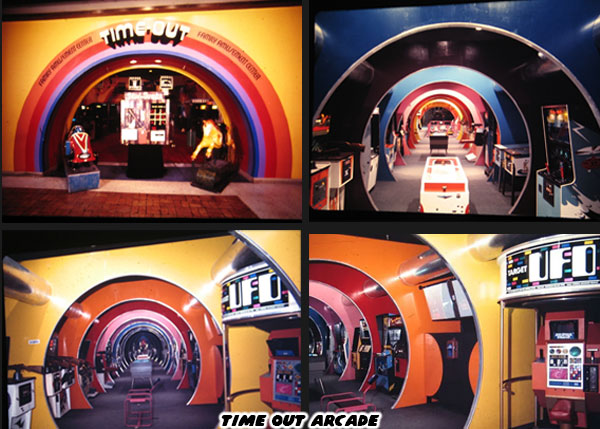
The boom and bust of the shopping mall in the US destroyed many stores and arcades. In Japan that was not the case. Arcades could stand apart from malls and cater to their own clientele. If older gamers and adults were the most frequent visitors then some arcades might even feature drink holders and ashtrays mounted on the cabinets. Smoking was banned in most US arcades for fire safety reasons but also because people assumed the majority of gamers were little kids. In Japan the stigma that gaming was only for children was not as prevalent. Like manga and animé there were titles for every age and interest, including adults only. This cultural acceptance of gaming as an entertainment pastime meant that arcades could advertise to every demographic. From a salaryman passing by to teens going on a first date, to an entire family. Arcades were an inclusive entertainment center.

In the biggest locations Namco and Sega would test brand new hardware first and even design deluxe cabinets that wouldn't appear anywhere else. Some of these cabinets were fully functional but also served for spectacle and publicity. Take for example the Ridge Racer Full Scale machine. A regular deluxe cabinet was usually more than adequate for any arcade. Ridge Racer looked as good as most Sega racers for the time, but to stand apart Namco also created a cabinet that fit a full size car, a red Mazda MX-5 Miata / Enunos Roadster and projection screen. The enormous cabinet that Namco used was actually a platform for a light gun game that they were developing. It could be converted to run one of a few other games meant for multiple players. In this way they could collect money from up to six players at a time rather than one rich gamer.
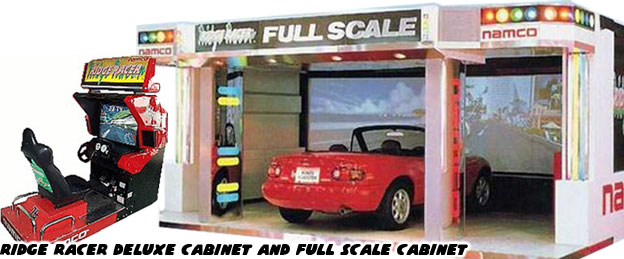
With solid games and innovative cabinets Sega and Namco were slugging it out for arcade supremacy. The next blog will highlight were Namco tried to pull ahead of the competition by going to an old standby.
As always if you would like to sponsor me
please visit my Patreon page and consider donating each month, even as little as $1 would help make better blogs and even podcasts!
